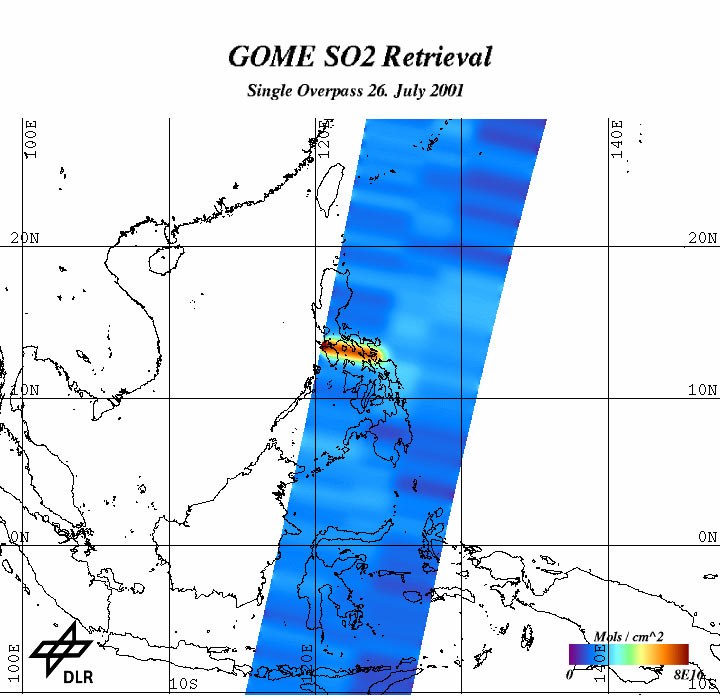High SO2 levels in the atmosphere due to the eruption of the Majon volcano in the Philippines
While Aetna was still in its eruptive phase, the notorious Majon volcano in the Philippines erupted again on 26 July 2001. Unlike Aetna, this volcano is far more dangerous for its immediate surroundings due to its explosive eruptions and is also capable of injecting significant quantities of sulphur dioxide into the upper troposphere and lower stratosphere.

Initial analyses of raw data from the GOME sensor (Global Ozone Monitoring Experiment) on board the ERS-2 are now available. These were recorded by the ESA (European Space Agency) data receiving station in Gatineau (Canada) and sent by post to the German Aerospace Centre (DLR) in Oberpfaffenhofen. However, the resulting time delay will soon be a thing of the past, as DLR, in cooperation with ESA and the University of Bremen, is now setting up a near-real-time service that will make it possible to process data from distant stations within a few hours.
The analysed data shows a significantly higher sulphur dioxide concentration in the vicinity of the volcano than was observed at Aetna. While the peak values there were around 15 times the background concentration, the analysis of a satellite overflight shortly after the start of the eruption revealed a concentration of sulphur dioxide that was almost 20 times higher than usual. According to local reports, an ash cloud more than 10 kilometres high was observed above the volcano, so that the emitted sulphur dioxide was very probably also introduced into these atmospheric layers. However, as this cloud had also worsened the visibility conditions for the GOME sensor, it is to be feared that the satellite measurements here have led to lower quantities of sulphur dioxide than were actually introduced into the atmosphere.
A prominent neighbour of Majon is the Pinatubo volcano, which ejected a huge amount of sulphur dioxide into the lower stratosphere between 12 km and 20 km in a spectacular eruption in 1991. Within several months of the eruption, the resulting sulphate aerosol could be detected worldwide with measuring instruments, including an airborne DLR laser instrument over northern Europe. The eruption of Pinatubo caused a noticeable global cooling by tenths of a degree in the following year. However, such an influence of the Majon sulphur cloud is not to be feared, as the eruptive phase has so far only been of short duration.
